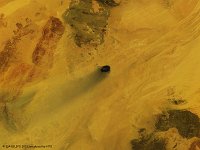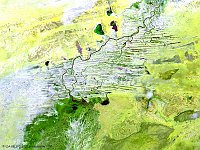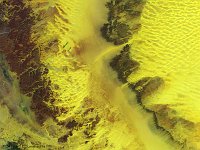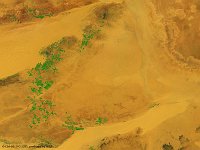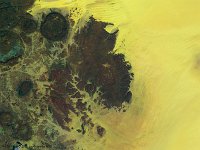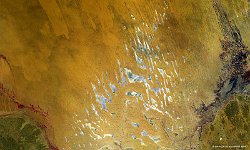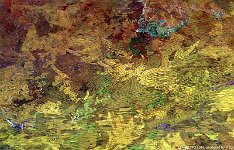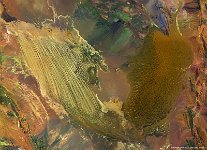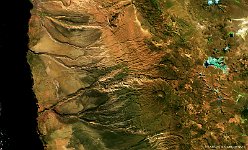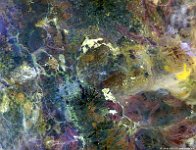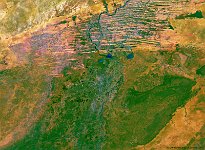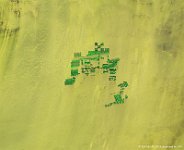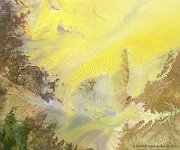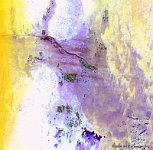24 / 41
Simpson Desert, Australia
Deserts are commonly monitored for a variety of applications on drought and surface energy. An example is the large erg of the Simpson Desert, Australia, a popular landmark in Winter, thanks to numerous water springs, while closed-off in Summer due to high temperatures and sand storms. The Desert is filled with a pattern of north-south oriented sand dunes, up to 200 km long and 40 m high and displaying a wide range of colours, from brilliant white to dark red, including pinks and oranges.
The interlace of dunes and water provides a striking colour palette in the PROBA-V 100 m image from the middle of March 2015.
Date: 16/03/2015
Resolution: 100m
